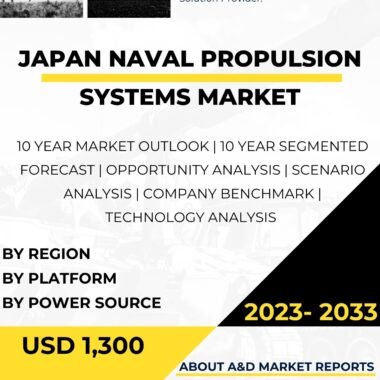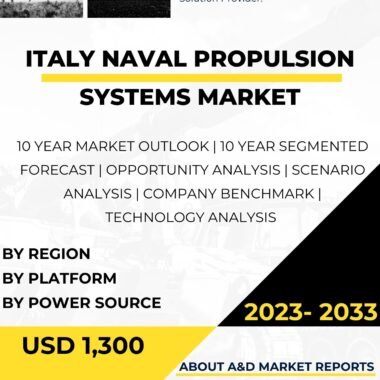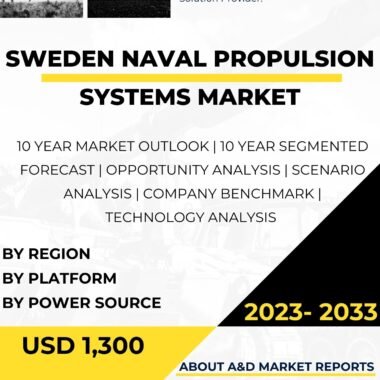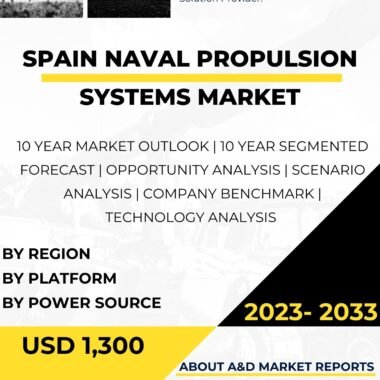Description
The Naval Propulsion Systems market in Malaysia has been experiencing significant growth and development in recent years, reflecting the country’s commitment to enhancing its maritime capabilities and strengthening its naval fleet. Naval propulsion systems are critical components of modern naval vessels, providing the necessary power and propulsion to ensure maneuverability, speed, and operational effectiveness on the high seas.
As a maritime nation with an extensive coastline and vast territorial waters, Malaysia faces diverse security challenges, including safeguarding its maritime interests, countering illicit activities, and protecting its maritime borders. The integration of advanced naval propulsion systems into its naval fleet enables the Royal Malaysian Navy (RMN) to maintain a credible and agile presence in its maritime domain.
The adoption of modern naval propulsion systems offers several significant advantages. These advanced propulsion systems utilize cutting-edge technology, such as gas turbines, diesel engines, and electric propulsion systems, to provide the necessary thrust and power for naval vessels. With advancements in propulsion technology, naval vessels can achieve higher speeds, longer endurance, and improved fuel efficiency, enhancing their operational range and effectiveness.
Moreover, naval propulsion systems are tailored to meet the specific requirements of different naval platforms, including frigates, corvettes, patrol vessels, submarines, and amphibious assault ships. Each platform may have unique propulsion needs, and the selection of an appropriate propulsion system is crucial to ensuring optimal performance and operational flexibility.
Additionally, advanced naval propulsion systems allow for various modes of propulsion, such as traditional shaft-driven propellers, waterjets, or azimuth thrusters. This versatility enables naval vessels to navigate in different operational environments, including shallow waters or confined spaces, and adapt to various mission profiles.
The Malaysian government has recognized the importance of international collaborations in acquiring and developing naval propulsion technologies. Partnerships with leading global defense companies and technology providers have facilitated access to cutting-edge naval propulsion systems and expertise. These collaborations have enabled technology transfer and capacity building, contributing to the growth of Malaysia’s domestic naval propulsion capabilities.
Furthermore, Malaysia has been actively investing in local research and development (R&D) initiatives to foster indigenous naval propulsion technologies. By encouraging homegrown innovation, Malaysia aims to achieve self-reliance in naval propulsion development and strengthen its naval defense industry.
While the Naval Propulsion Systems market in Malaysia shows promise, it is not without challenges. One of the primary hurdles is the high cost of developing and acquiring advanced propulsion systems. These sophisticated technologies require significant investment in research, development, and testing. Budget constraints may impact the pace and scale of naval propulsion acquisition and development efforts.
Moreover, naval propulsion systems must meet stringent safety, reliability, and environmental standards. The effectiveness of naval vessels largely depends on the performance and dependability of their propulsion systems. Ensuring the safety and environmental sustainability of naval propulsion technologies is vital to maintaining operational readiness.
Additionally, the integration of advanced propulsion technologies presents challenges in terms of maintenance, training, and logistics. The RMN must ensure that its personnel receive specialized training to operate and maintain these complex systems effectively. Moreover, establishing a robust supply chain for spare parts and technical support is crucial for sustaining naval vessels’ operational readiness.
Looking ahead, the Naval Propulsion Systems market in Malaysia is poised for further growth. The government’s commitment to modernizing its naval capabilities and adopting advanced technologies will drive continued investments in naval propulsion systems. As propulsion technologies continue to evolve and demonstrate their effectiveness, they are likely to play an increasingly pivotal role in Malaysia’s maritime defense and security strategy.
Moreover, Malaysia’s participation in regional security collaborations and joint naval exercises will likely influence its naval propulsion requirements. As the country seeks to strengthen its position as a key player in regional maritime security and defense cooperation, the demand for advanced naval propulsion systems with interoperability and compatibility with allied forces will increase.
In conclusion, the Naval Propulsion Systems market in Malaysia has experienced significant growth and progress. The government’s focus on enhancing its maritime capabilities and investing in advanced naval propulsion technologies has paved the way for the integration of modern propulsion systems into its naval fleet. International collaborations and domestic research efforts have positioned Malaysia as a participant in the global naval propulsion landscape.
However, challenges related to budget constraints, technology development, safety standards, maintenance, and logistics must be addressed proactively to sustain and enhance the growth of the naval propulsion market in the years to come. By maintaining a modern and capable naval propulsion capability, Malaysia can effectively enhance its maritime security, protect its territorial waters, and bolster its overall naval defense posture.




